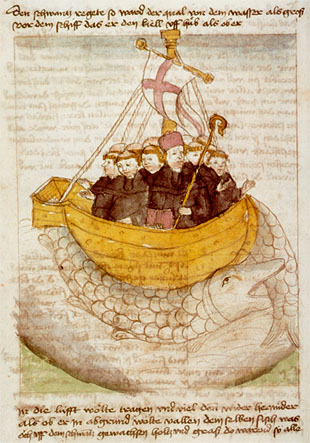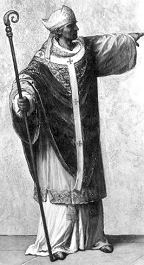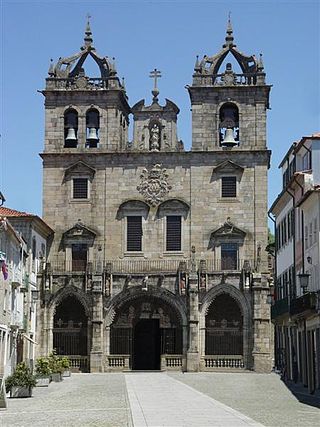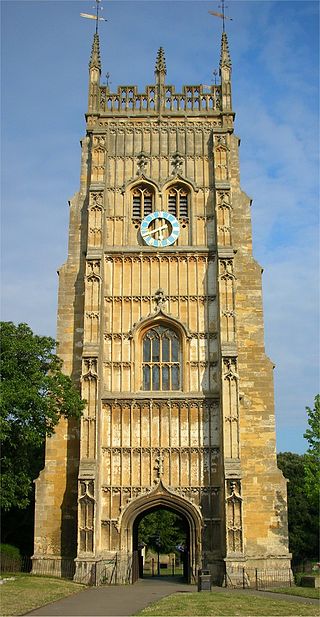Aimoin of Fleury, French chronicler, was born at Villefranche-de-Longchat, Southwestern France about 960. Early in his life he entered the monastery of Fleury, where he became a monk and then passed the greater part of his life. Between c. 980 and 985 Aimoin wrote about St. Benedict in Abbey of Fleury-sur-Loire. His chief work is a Historia Francorum, or Libri V. de Gestis Francorum, which deals with the history of the Franks from the earliest times to 653, and was continued by other writers until the middle of the twelfth century. It was much in vogue during the Middle Ages, but its historical value is now regarded as slight. It was edited by G. Waitz and published in the Monumenta Germaniae Historica: Scriptores, Band xxvi.

Stephen of Ripon was the author of the eighth-century hagiographic text Vita Sancti Wilfrithi. Other names once traditionally attributed to him are Eddius Stephanus or Æddi Stephanus, but these names are no longer preferred or accepted by historians today; modern usage tends to favour "Stephen".

Brendan of Clonfert is one of the early Irish monastic saints and one of the Twelve Apostles of Ireland. He is also referred to as Brendan the Navigator, Brendan the Voyager, Brendan the Anchorite, and Brendan the Bold. The Irish translation of his name is Naomh Bréanainn or Naomh Breandán. He is mainly known for his legendary voyage to find the “Isle of the Blessed” which is sometimes referred to as “Saint Brendan’s Island”. The written narrative of his journey comes from the immram The Navigatio Sancti Brendani Abbatis.

Saint Giles, also known as Giles the Hermit, was a hermit or monk active in the lower Rhône most likely in the 7th century. Revered as a saint, his cult became widely diffused but his hagiography is mostly legendary. A town that bears his name grew up around the monastery he purportedly founded, which became a pilgrimage centre and a stop on the Way of Saint James. He is traditionally one of the Fourteen Holy Helpers.

Braga is a city and a municipality, capital of the northwestern Portuguese district of Braga and of the historical and cultural Minho Province. Braga Municipality had a resident population of 193,333 inhabitants, representing the seventh largest municipality in Portugal by population. Its area is 183.40 km2. Its agglomerated urban area extends to the Cávado River and is the third most populated urban area in Portugal, behind Lisbon and Porto Metropolitan Areas.

Saint Disibod (619–c.700) was an Irish monk and hermit, first mentioned in a martyrologium by Hrabanus Maurus. Hildegard of Bingen around 1170 composed a Vita of Saint Disibod He is commemorated on 8 September.
Adomnán or Adamnán of Iona, also known as Eunan, was an abbot of Iona Abbey (r. 679–704), hagiographer, statesman, canon jurist, and saint. He was the author of the Life of Columba, probably written between 697 and 700. This biography is by far the most important surviving work written in early-medieval Scotland, and is a vital source for our knowledge of the Picts, and an insight into the life of Iona and the early-medieval Gaelic monk.

Fructuosus of Braga, was the Bishop of Dumio and Archbishop of Braga, also known for being a great founder of monasteries The son of a Visigothic dux in the region of Bierzo, at a young age he accompanied his father on official trips over his estates. After a period spent as a hermit, he established a monastery at Complutum and became its first abbot.

Saint Martin of Braga, also known as Saint Martin of Dumio, was an archbishop of Bracara Augusta in Gallaecia, a missionary, a monastic founder, and an ecclesiastical author. According to his contemporary, the historian Gregory of Tours, Martin was plenus virtutibus and in tantum se litteris imbuit ut nulli secundus sui temporis haberetur. He was later canonized in the Catholic Church as well as in the Eastern and Oriental Orthodox churches, for his work in converting the inhabitants of Gallaecia to Chalcedonian Christianity, being granted the cognomen of "Apostle to the Suevi". His feast day is 20 March.

Notkerof Liège was a Benedictine monk, bishop (972–1008) and first prince-bishop (980–1008) of the Bishopric of Liège.

The Archdiocese of Braga is a Latin Church ecclesiastical territory or archdiocese of the Catholic Church in Portugal. It is known for its use of the Rite of Braga, a use of the liturgy distinct from the Roman Rite and other Latin liturgical rites.

The Cathedral of Braga is a Roman Catholic church in the northern city of Braga, Portugal. Due to its long history and artistic significance, it is also one of the most important buildings in the country. It is the seat of the Archdiocese of Braga and of the Primate Archbishop of Portugal and Spain.

Audomar, better known as Omer, was a bishop of Thérouanne, after whom nearby Saint-Omer in northern France was named. He is venerated as a saint in the Catholic and Eastern Orthodox churches

Kornelimünster Abbey, also known as Abbey of the Abbot Saint Benedict of Aniane and Pope Cornelius, is a Benedictine monastery that has been integrated since 1972. The abbey is located in Aachen in North Rhine-Westphalia in Germany.

Saint Lietbertus of Brakel was bishop of Cambrai from 31 March 1051 to 28 September 1076. Liebertus was born to the Brabantian nobility at Opbrakel. He served as archdeacon and provost of the cathedral of Cambrai before his election as bishop.

Magloire, better known as Saint Magloire of Dol, is a Breton saint. Little reliable information is known of Magloire as the earliest written sources appeared three centuries after his death. These sources claim that he was a monk from Wales who became the Bishop of Dol-de-Bretagne in Brittany during the 6th century, and ended his life on the island of Sark, where he was abbot of a monastery.

Padarn was an early 6th century British Christian abbot-bishop who founded St Padarn's Church in Ceredigion, Wales. He appears to be one and the same with the first bishop of Braga and Saint Paternus of Avranches in Normandy. Padarn built a monastery in Vannes and is considered one of the seven founding saints of Brittany. Padarn's early vita is one of five insular and two Breton saints' lives that mention King Arthur independently of Geoffrey of Monmouth's Historia Regum Britanniae.

Dominic of Evesham was a medieval prior of Evesham Abbey in England and writer of religious texts. Probably a native Englishman, there is some confusion about when he became a monk, but by 1104 he was at Evesham and by 1125 he held the office of prior. He is chiefly known for his religious works, including one on the miracles of the Virgin Mary that was an important source for later writings on the subject. Four of his works are still extant.
Reginald of Canterbury was a medieval French writer and Benedictine monk who lived and wrote in England in the very early part of the 12th century. He was the author of a number of Latin poems, including an epic entitled Malchus, which still survives.
Hugh of Amiens, also known as Hugh de Boves, monk of Cluny, prior of Limoges, prior of Lewes, abbot of Reading and archbishop of Rouen, was a 12th-century Picard-French Benedictine prelate.















